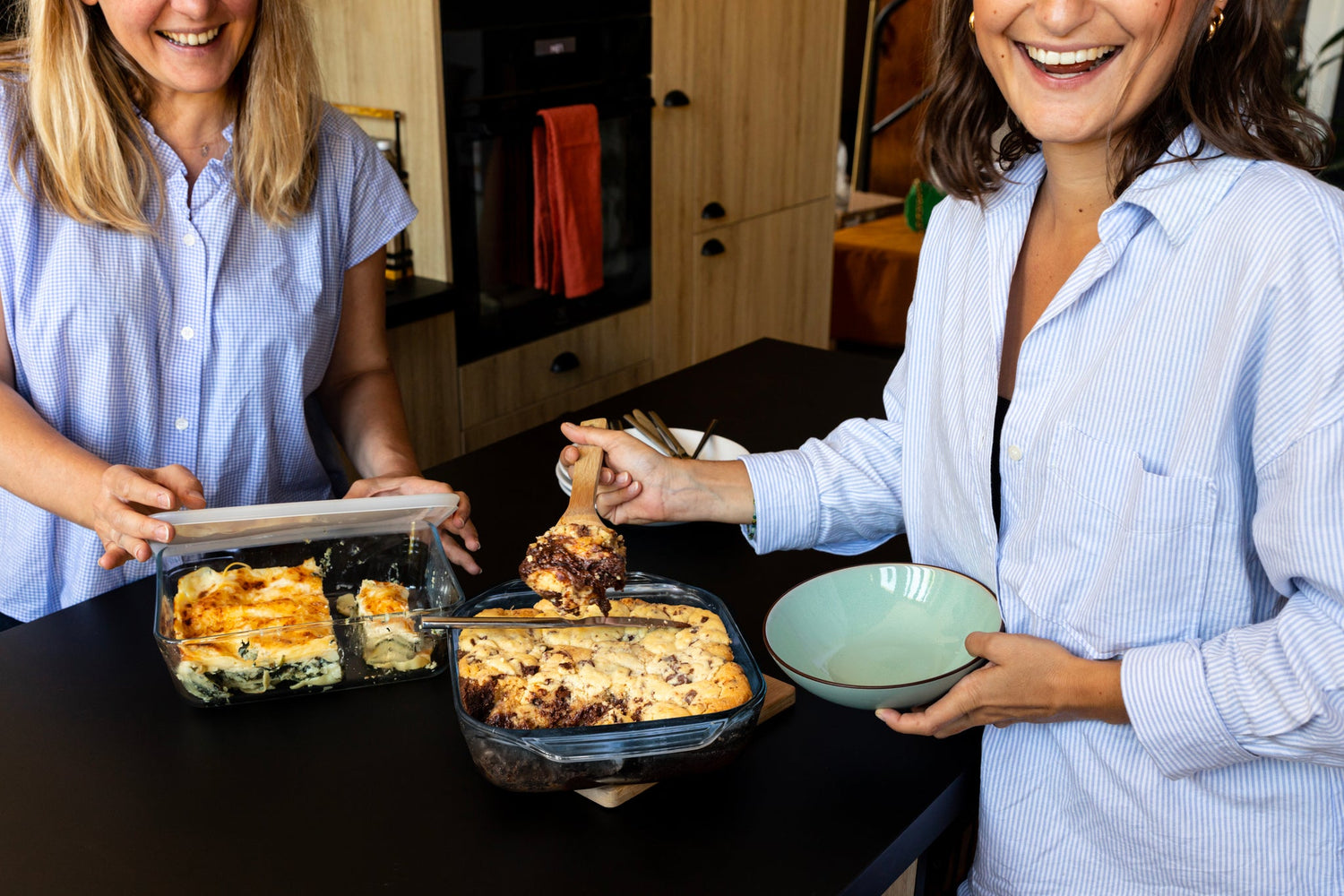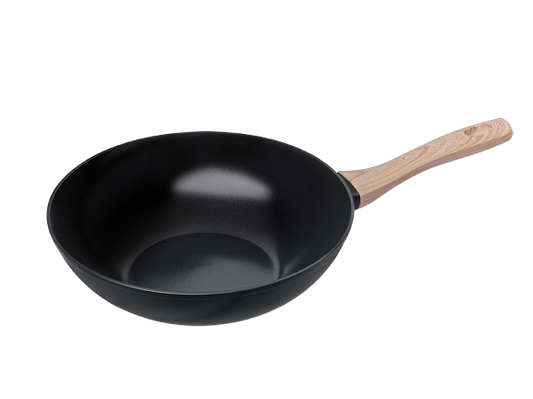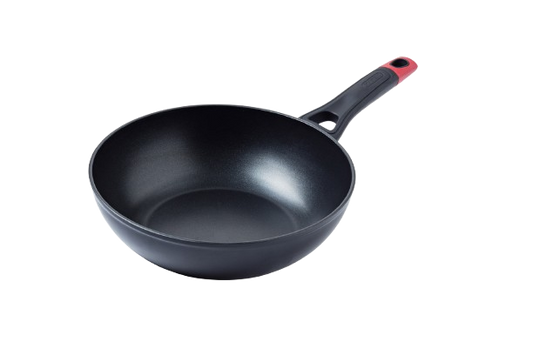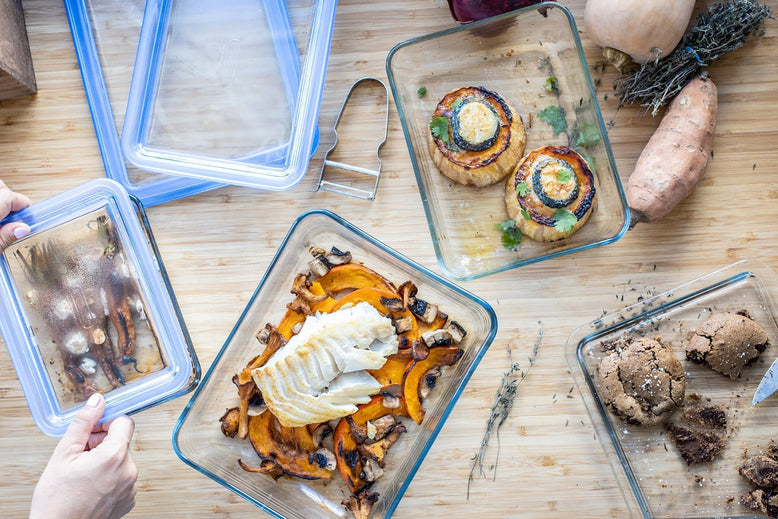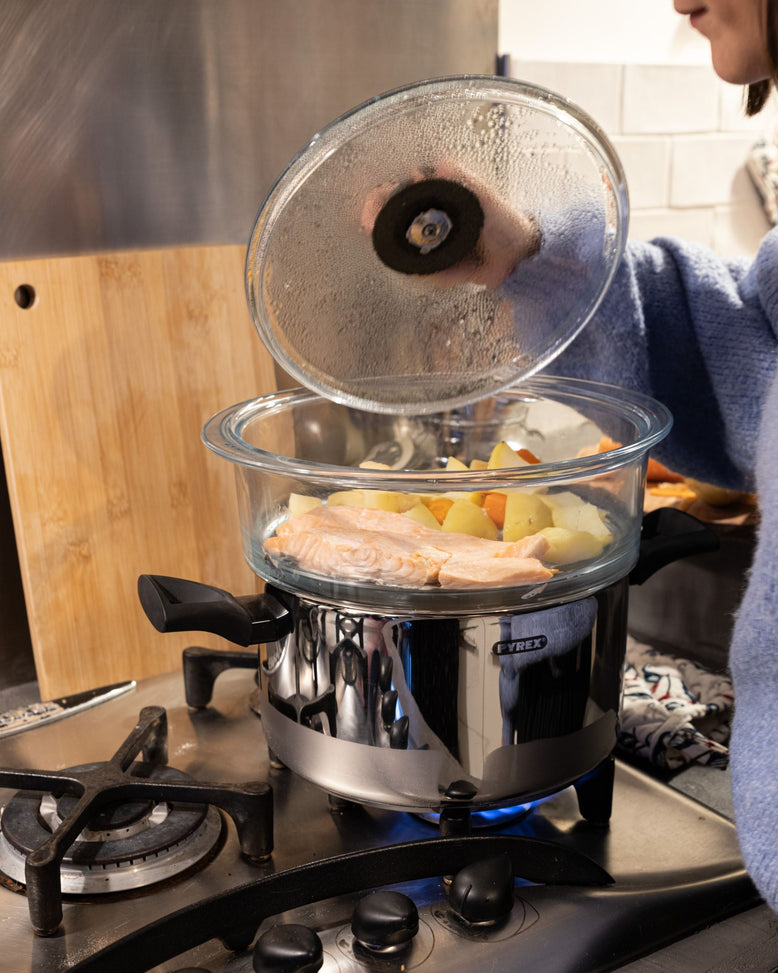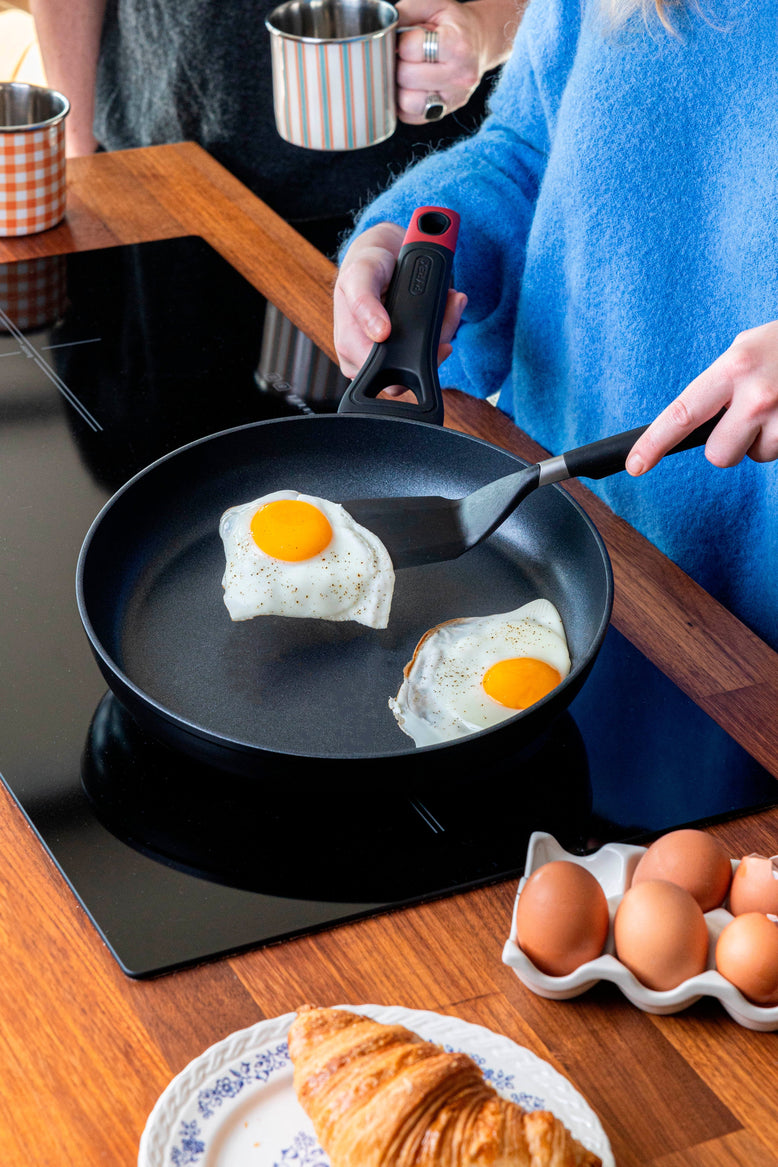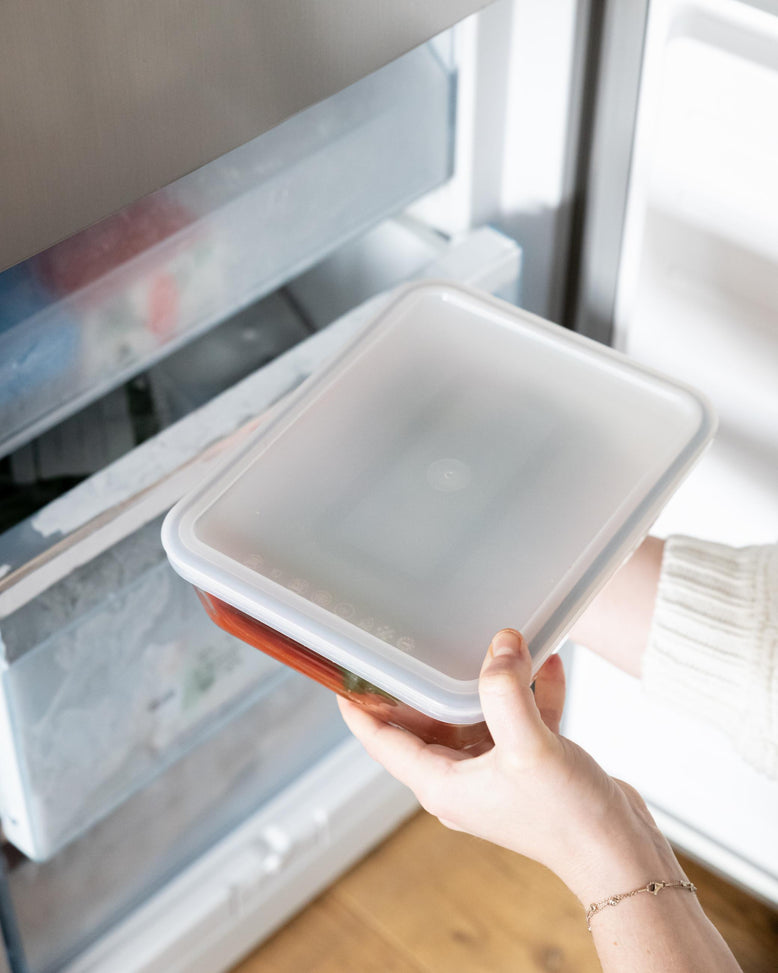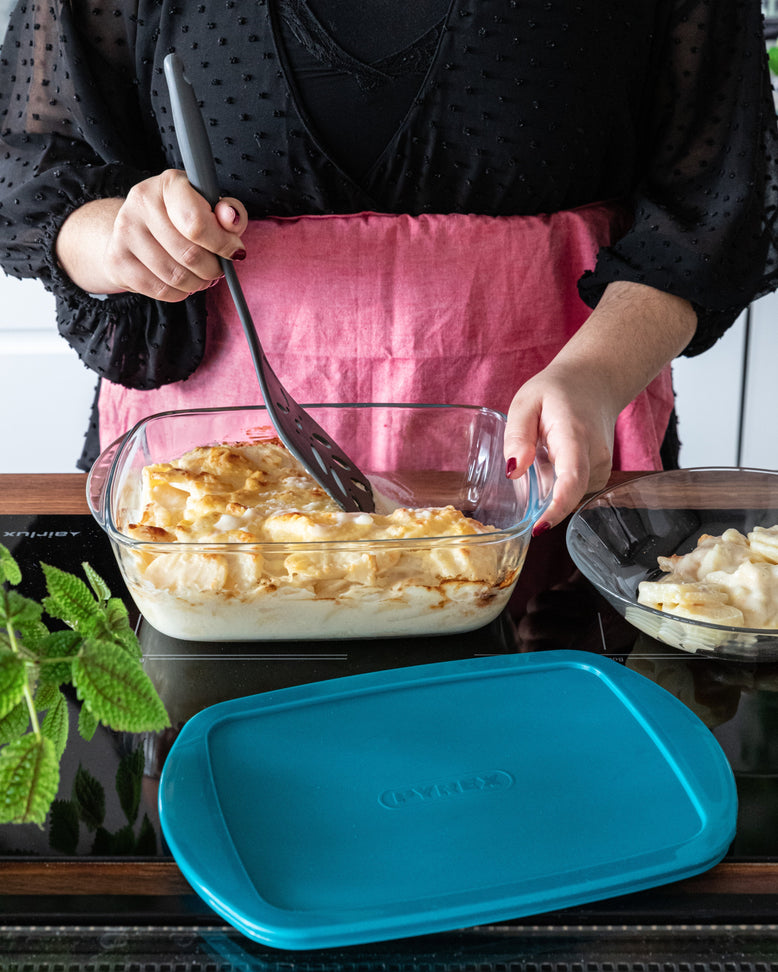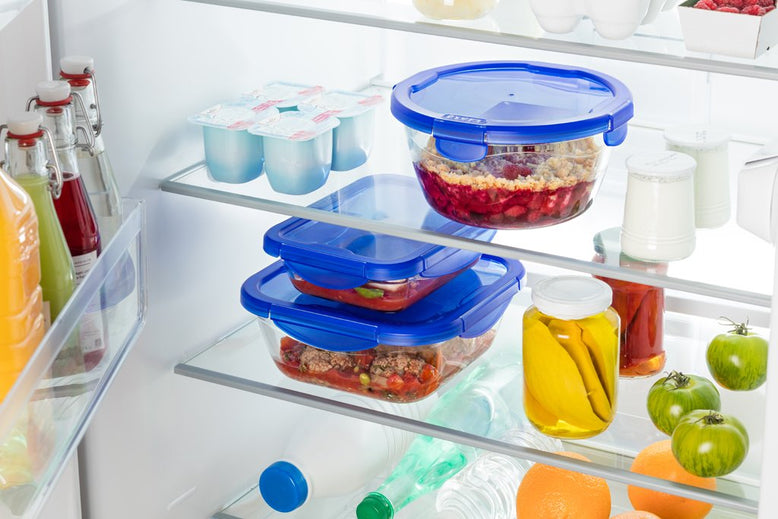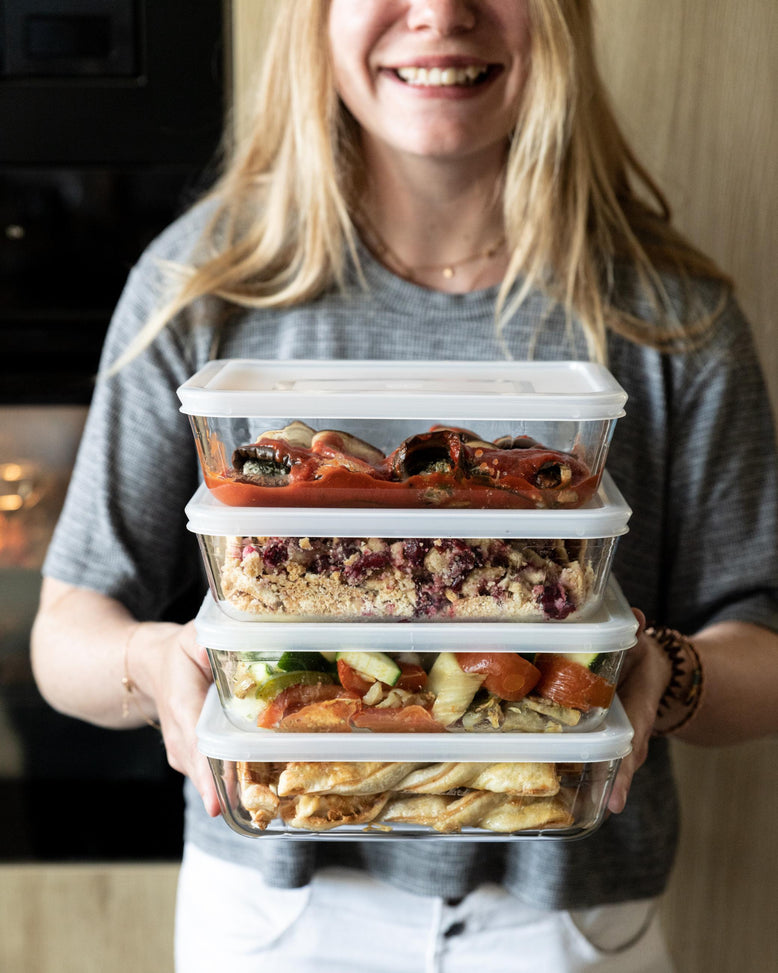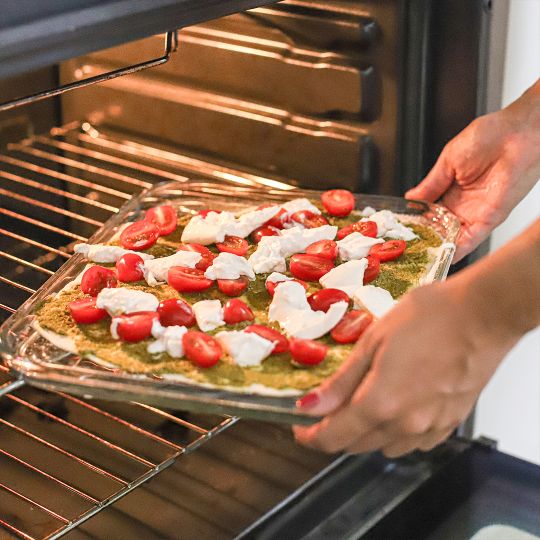How to choose the right wok?
Originally from Asia, the wok has now become a staple in our kitchens. Versatile and practical, it allows you to stir-fry vegetables or meat, but also to simmer and deep-fry. Its unique shape offers a major advantage: excellent heat conductivity, meaning faster and, above all, more even cooking.
6 benefits of using a wok in the kitchen
There are six main reasons why a wok is a must-have for everyday cooking:
-
Fast, healthy cooking: its flared sides and narrow base distribute heat perfectly and speed up cooking. Vegetables keep their vitamins, crunch, and flavour. And with a Pyrex® wok featuring a PFAS-free non-stick coating, you only need a drizzle of oil.
-
Versatility: a wok isn’t just for vegetables. It’s also ideal for frying prawns or fritters, or for simmering a dish.
-
Perfect for big meals: usually generous in size, a wok is the ally of large families, helping prepare hearty dishes to share.
-
Energy efficiency: with its near-perfect heat distribution, cooking is quicker and more even. That shortens cooking times and saves energy.
-
Easy cleaning: a Pyrex® wok with a PFAS-free non-stick coating is simple to maintain, either by hand or in the dishwasher.
-
A gateway to world cuisine: Chinese, Thai, Indian… the wok is perfect for Asian food but equally at home in recipes from all around the world.
► Did you know? For steaming dumplings or vegetables, Pyrex® saucepans can be fitted with compatible glass steam baskets.
The different types of woks
Choosing between a traditional wok or an electric wok
The traditional wok comes in stainless steel or aluminium, with or without a non-stick coating, and also in cast iron or steel. It’s used on a hob or gas stove. A traditional wok allows for authentic cooking and is perfect for stir-fried dishes with meat and vegetables.
The electric wok has a narrow base, flared sides, and usually comes with a lid. Equipped with a thermostat, it’s practical for small kitchens or for serving directly at the table. It doesn’t reach the same high temperatures as a classic wok but is easy to maintain thanks to its non-stick coating.
What kind of cooking is a wok used for?
Whether traditional or electric, a wok can be used for stir-frying, deep-frying, simmering, and steaming. Its versatility makes it one of the easiest and most useful pieces of cookware to add to your kitchen. Available in different sizes, it’s suitable for everything from small dishes to large family meals.
How to choose the right material for your wok
As we’ve seen in this buying guide, woks are available in stainless steel, aluminium, and steel. But today, the best option is to choose a wok with a non-stick coating — like those offered by Pyrex®.
Opting for a stainless steel wok: durability and healthy cooking
A stainless steel wok without a non-stick coating is built to last. With just a little oil, you can toss in your ingredients and quickly achieve perfectly stir-fried vegetables.
Choosing an aluminium wok: lightness and fast heating
Aluminium is renowned for its excellent heat conductivity. That’s why Pyrex® has chosen it for its wok range, combined with a high-performance non-stick coating for healthy, quick cooking without demanding maintenance.
Preferring a cast iron or steel wok: robustness and natural non-stick
A cast iron or steel wok needs to be seasoned before use. Once prepared, it naturally becomes non-stick and is perfect for stir-frying, deep-frying, steaming, or simmering.
Comparing non-stick coatings
Non-stick coatings have become standard for woks, saucepans, stewpots, and frying pans. Easy to maintain, non-stick woks are dishwasher-safe and allow you to cook with very little — or even no — added fat. Here we’re talking about classic non-stick coatings without PFOA (banned since 2015). Note: the more layers (between 1 and 3), the more resistant the wok will be to scratches and scuffs.
Another natural non-stick option for healthy cooking is ceramic. It ensures fast, healthy cooking and is highly resistant to scratches — but it does not cope well with impacts.
Choosing the right wok size for your needs
In Asian cooking, woks come in different diameters. In Europe, the most common size is 28 cm — the one chosen by Pyrex®. Why? Because it perfectly suits most recipes and allows you to cook for an average of four people, while ensuring fast and healthy cooking.
Checking wok compatibility with your hob
It’s important to make sure your wok is suitable for your type of hob, whether gas, electric, halogen, or induction. Like all Pyrex® cookware, the woks available on our website are compatible with all heat sources, including induction.
Applying usage precautions and care tips
To take good care of your wok:
-
Never place it under cold water straight after cooking — this can cause thermal shock and damage it.
-
Never cut food directly inside your wok.
-
Always use utensils suited to its coating.
-
Remember to season an iron or steel wok and repeat the process every 4–5 uses.
-
Add a little washing-up liquid and water, heat it gently, and it will release any stuck-on residues.
FAQ – Everything you need to know about choosing the right wok
What is the best material for a wok?
A non-stick wok is the easiest to maintain and requires less oil for cooking. A cast iron wok is the most authentic. An aluminium wok heats up the fastest, while a stainless steel wok is the most durable.
Can you use a wok on an induction hob?
Yes — as long as you check that the wok is induction-compatible. All Pyrex® woks are suitable for induction cooking.
Which coating should you choose to prevent food from sticking?
The best option is a non-stick coating, like the one used in Pyrex® woks.
What size wok is best for a family?
A 28 cm wok is the most suitable size for a family of four.
Can you steam food in a wok?
Pyrex® woks are not designed for steaming, but our glass steam baskets are compatible with the Pyrex® saucepan range.
What is the average price of a good wok?
The price depends on the diameter and the material. On average, expect to pay around £35 for a non-stick or steel wok, £45 for a stainless steel wok, and €60 for a cast iron wok. An electric wok costs around £70.

